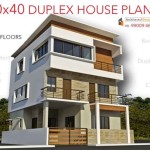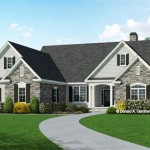Essential Aspects of 1930s House Plans
The 1930s marked a significant era in architectural history, particularly in the realm of residential design. Houses built during this decade exhibited a captivating blend of traditional and modern aesthetics, resulting in charming and timeless structures. This article delves into the essential characteristics that define 1930s house plans, providing insights into their enduring appeal and relevance even in contemporary times.
Emphasis on Symmetry and Proportion
1930s house plans adhered to classical principles of symmetry and proportion, creating a sense of balance and harmony. The facade of these homes typically featured a central entry point flanked by symmetrical windows and decorative elements. The overall massing of the house was often rectangular or square, with clear and defined proportions.
Variety of Architectural Styles
While symmetry and proportion were prevalent, 1930s house plans showcased a diverse range of architectural styles. Among them were:
- Tudor Revival: Inspired by medieval English architecture, these homes featured steeply pitched roofs, decorative half-timbering, and elaborate chimneys.
- Colonial Revival: Characterized by classic symmetry, rectangular facades, and often adorned with columns, pediments, and fanlights over the entrances.
- Art Deco: Influenced by the Art Deco movement, these homes exhibited geometric shapes, stylized ornamentation, and a sleek and modern aesthetic.
Functional Floor Plans
In addition to aesthetic considerations, 1930s house plans emphasized functionality and practicality. The floor plans were designed to accommodate the changing lifestyles of the time. They featured open and airy living spaces, which facilitated the flow of light and air. The kitchens were often centrally located and equipped with modern appliances, reflecting the increasing importance of efficient home management.
Generous Windows and Natural Light
1930s house plans made ample use of windows to maximize natural light and create a connection to the outdoors. Large windows were common in living rooms, dining rooms, and bedrooms, providing expansive views and a sense of spaciousness. Some homes also incorporated sunrooms or conservatories, which allowed occupants to enjoy the outdoors in a sheltered environment.
Ornamental Details and Craftsmanship
1930s houses were not only functional but also visually appealing. They showcased attention to detail in their ornamental elements and craftsmanship. Decorative features such as crown moldings, wainscoting, and built-in cabinetry added character and elegance to the interiors. The exterior facades were often adorned with decorative brickwork, stone accents, and elaborate trim work.
Conclusion
1930s house plans represent a captivating intersection of traditional and modern aesthetics, resulting in timeless and charming structures. Their emphasis on symmetry, proportion, and functional floor plans created homes that were both visually appealing and practical. The variety of architectural styles catered to diverse tastes, while the use of windows and decorative details ensured a connection to the outdoors and a refined interior environment. These essential aspects continue to inspire architects and homeowners alike, serving as a testament to the enduring appeal of 1930s residential design.

1930s Real Estate Vintage Home Floor Plans The Inn

Southern Style House Plan 1930 Durham

1930s Real Estate Vintage Home Floor Plans The Inn

Explore The Charm Of A 1935 European Provincial House Plan

Ranch Style House Plan 3 Beds 2 Baths 1930 Sq Ft 10 106 Houseplans Com

1930s Real Estate Vintage Home Floor Plans The Inn

1930s Architecture House Plans Catalog With 63 American Designs Including Simple Layout Floor Printable Instant Digital

1930 Practical Homes Craftsman House Plans Cottage Floor Architectural

My New Obsession Vintage House Plans Aimee S Victorian Armoire

My New Obsession Vintage House Plans Aimee S Victorian Armoire








